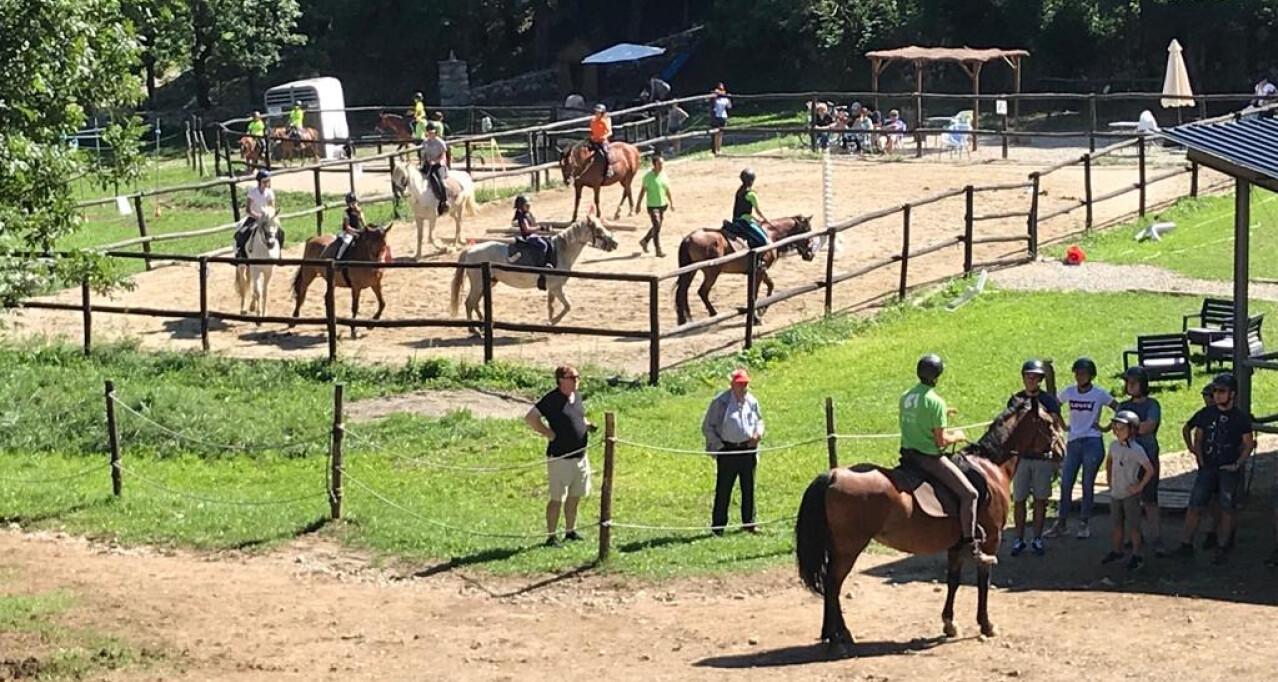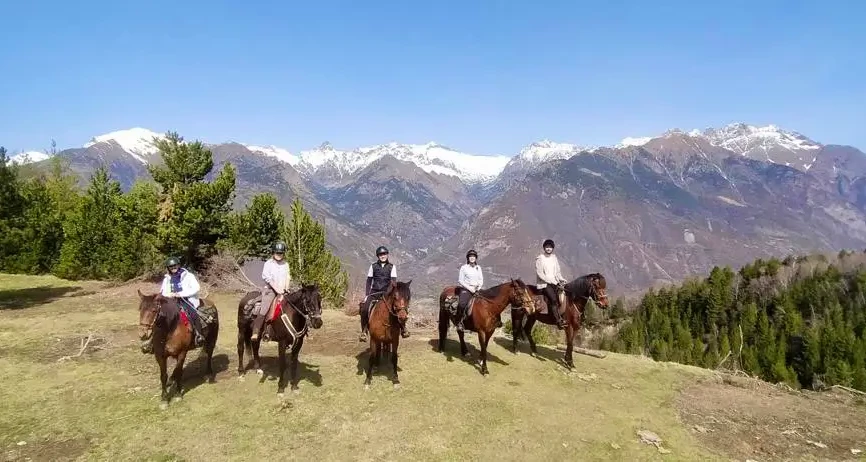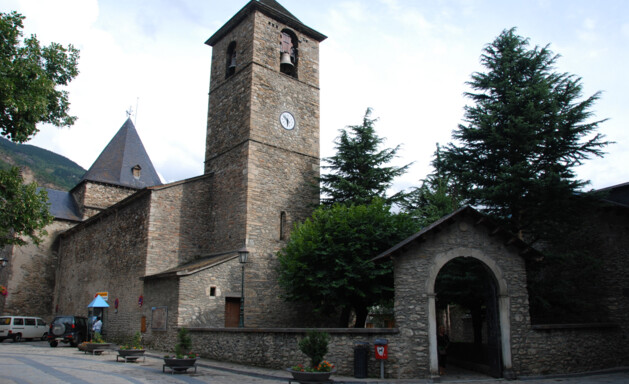How to train a horse for equestrian rides in nature
In the following post we open the doors of Anima Equi to share how we train, prepare, and connect with our horses.

Horses are the heart of Anima Equi and part of our family. Currently, our herd is made up of seventeen horses, including purebred Spanish (PRE) and crossbreeds. All year round, they live semi-freely in open pastures, and for that reason, they’re well adapted to the demanding terrain of the Aragonese Pyrenees: they’re steady, reliable, and resilient—able to cross rivers and navigate tricky trails with ease.
Trained with care, respect, and technique, our horses are friendly and ready to accompany you on mountain routes, equestrian rides, or training sessions, whether you're just starting out or have experience as a rider. Today, we open the doors to our home to share how we train, prepare, and connect with our horses.
What Makes a Horse Suitable for Equestrian Tourism?
Training a horse for mountain equestrian tourism goes beyond the basics of riding. We’re not only looking for responsiveness in walk, trot, and canter—we want our horses to develop autonomy, emotional balance, and confidence to calmly face real-life outdoor situations. These are the horses that will guide families, children, groups of friends, or individuals through high mountain trails and experiences.
Our horses are prepared for long rides, steep inclines, river crossings, wildlife encounters, and all kinds of surprises. This requires specific physical and mental preparation. At Anima Equi, we use a progressive approach, based on respecting the horse’s rhythm and encouraging learning by example—especially in the early months.
Basic training and learning through observation
In the first phase, we teach the horse to respond to the three gaits: walk, trot, and canter. But we soon begin working on an active and intentional walk, helping the horse choose the best pace on the more difficult sections of our adventure trails. Early on, we guide the horse on the best path, and gradually invite them to decide for themselves. To help with this, we pair them with an experienced horse who models how to move safely and efficiently. This way, they learn by observing.
We also train our horses to maintain a steady canter, without being disturbed by the presence of other horses. They are educated to be calm animals, to enjoy the countryside, and to respond to gentle cues. A well-trained horse should move with a long neck, an active, constant rhythm, and relaxed, extended reins.

Collaborative horses
In mountain equestrian tourism, riders often need one hand free—to check a map, open a gate, or lead a pack horse. That's why we train our horses to get used to being ridden with both reins in one hand. We also focus on groundwork—accustoming horses to respect their rider when walking beside them and to navigate around potential obstacles.
On high mountain routes, it’s common to come across tricky sections—steep terrain or large obstacles (like a fallen tree that can’t be bypassed)—where it’s necessary to dismount and continue on foot. The horse must be previously trained to respect space, follow commands, and remain calm in these situations.
Trust and safety in any setting
It’s important for the horse to be comfortable with a lead rope touching its legs without panicking. We often tie them in a variety of outdoor situations—trees, fences, posts, etc. The rope should be long enough so the horse can graze and regain energy. For overnight stays outdoors, we use an 8-meter rope sheathed in hose material, with a swivel stake.
A trail horse should be mountable from both sides—not just the left—as rugged terrain or cliffs can make mounting from the left impossible. Being able to mount from the right adds an extra level of safety and flexibility for the rider.
Horses familiar with nature and people
Progressive desensitization is essential. We train our horses to stay calm in everyday outdoor situations: traffic, agricultural machinery, crossing bridges or streams, encounters with dogs, and loading into trailers, trucks, or even boats. They also get used to having their riders open or close gates while mounted and to being shoed outdoors without difficulty.
Sometimes a horse may lose a shoe during a mountain route—in such cases, the equestrian guide must be able to apply an emergency shoeing. Last but not least: outdoor horses must be sociable—with both humans and other horses. That’s why at Anima Equi, we teach our horses to work in parallel with others, without aggression or stress. Their emotional wellbeing is key to offering calm, guided horseback experiences.
Prepared for equestrian tourism
At Anima Equi, we don’t just offer nature rides—we also provide professional equestrian training and immersive experiences in the world of horses. We organize riding courses, workshops for all ages, and pony activities for the little ones. Our horses are ready to accompany you on one-day or multi-day routes. We offer beginner-friendly rides, perfect for first-timers. But above all, we specialize in horseback adventures for experienced riders seeking a unique journey through the extraordinary natural setting of the Benasque Valley, guided by a professional.
At Anima Equi, our horses aren’t just well-trained animals: they’re travel companions, nature teachers, silent guides in the mountains, and members of our extended family. With them, every route becomes a new story, every ride a lesson, and every course a gateway to learning.

